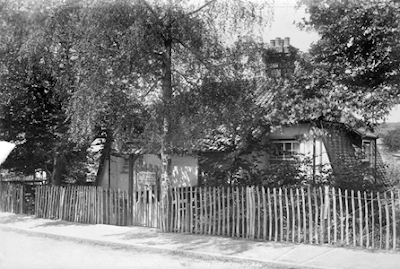I have managed to see this pamphlet,
Filius nulls: nobody's child by Joseph King which was published in 1913, and is held in the London School of Economics Special Archives. The short pamphlet is a fascinating reveal of Joseph King's support for women's rights, on a highly controversial moral issue at that time but which is trivial now, almost 100 years later. This further supports the references to women's suffrage that I had found King associated with, and posted on previously in
Suffragette Connections: Part 2 - The Politician.
 |
Joseph King MP
c. 1910 |
"Prefatory Note
This pamphlet calls attention to a cruel injustice, wider
in extent, more silently borne, and more bitterly resented by the sufferers
than many grievances which have societies, sermons, subscription lists, etc.,
to accomplish their removal and mitigate their miseries.
The writer has been led to publish these pages by his
growing conviction, confirmed from many quarters, that legislation is needed on
this subject. He has each Session since
he entered the House of Commons introduced an Illegitimacy Bill, an outline of
which appears on pages 28 ff post. The correspondence and communications
from all sorts and conditions of men and women, due to Press notices of his
Bill, etc., have been convincing, and are referred to in this pamphlet.
Legislation on this question cannot be expected till
Government takes it up, and that is hardly likely to come till the Home
Secretary is made so aware that he cannot safely disregard the demand for legislation...
J. King
House of Commons,
June, 1913."
The pamphlet begins with:
"Born without proper father or mother!
"860,327 children were born in England and Wales 1910 of legitimate birth, with married women for
mothers; 36,635 were born of illegitimate birth, mostly unwanted children, with
mothers indeed, but in the eyes of the law, filii
nullius, the children of no one!
Handicapped at the start of life, subject to disabilities, disfavour and
scorn, do these children get the equality of opportunity which a just society
should mete out to all its members? Few
persons realize the magnitude of this social problem, the injustices of the
present law, nor the extent to which old traditions and unfair conditions still
oppress not only the unwanted children, but all classes of the community.
"The magnitude of the problem is excuse enough for facing it
fairly and frankly. Roughly, 1 in every
24 children born is illegitimate; about 4 in every 100! In most cases an illegitimate birth means the
loss of character, employment, home, reputation to the mother! Perhaps driven from her parent’s home,
perhaps in to the workhouse, often without any aid from the man who is fellow
parent of her child, the mother pays a high price for her shame. She pays in full in a few weeks for her own
and for the man’s folly and sin. Some
say that she ought not to expect anything else.
But why should the little British citizen have to pay heavily…?"
King outlines "The Present Practice in Bastardy
Cases…Suppose the mother has had no provision made for her child by the father,
and suppose she is able to clearly show with some show of truth who the father
is, recourse will be had to the magistrates to make an affiliation order, and
she will have to go to the court under strict rules of law. Under these conditions a woman, who is about
to become, or has become, the mother of a bastard, may apply to a justice for a
summons against the man who is father of the child; but the application must,
as a rule, be made within twelve months of the child’s birth. When the summons has been issued, and served
on the man, he has six days before the hearing.
He is entitled to this to prepare his defence, but sometimes uses this
interval to flee the country or abscond.
If he appears at the hearing, the evidence of the woman, which is
essential, must be given first and in open court, and must be corroborated in
some material particular by other testimony to the satisfaction of the
justices. If her story is
uncorroborated, however plain and probable it may be, the case is
dismissed. But suppose there is a
corroborated case to answer; it too often happens that the woman or girl has no
legal adviser and the man is well represented; in such cases she stands a poor
chance of getting an order made the he should contribute anything. But suppose she wins the case, the maximum
amount which the justices can order is five shillings a week till the child is
sixteen; the sum is inadequate.”
"...The Woman’s Grievances are, in view of her inevitable
physical and mental sufferings, very great;
(1) She cannot obtain by
legal process any maintenance for herself for the time before her child is
born. She may lose her employment, be
turned out of her home or lodgings – these things often happen – and she may be
driven into the workhouse, she may even be driven to deception, fraud, or even
vice to keep her head above water, but she can obtain nothing till her child is
born. She ought to have a legal remedy,
by which she could get from the man some maintenance and something to support
her in her trouble and confinement.
There ought to be a Maternity Order made where a woman is in such
conditions as just stated, say for three months before and one month after the
birth; a maximum of ten shillings a week would meet the case. Such a provision would save many women who
sink at this crisis into conditions of nameless disgrace. It would give indirectly to many babes a
healthier, happier entry into life and make
their whole future prospect brighter."





































